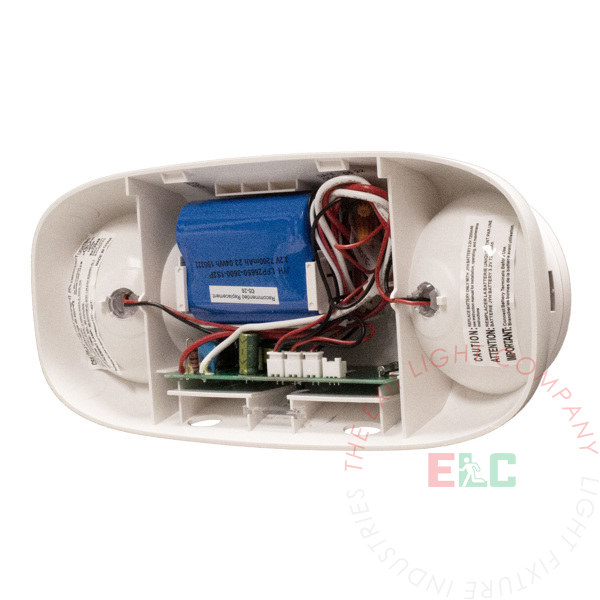
The Exit Light Co has recently released four new products containing LiFePO4 batteries.
- The EL-THO, a high-output, low-profile LED emergency light, packing a walloping 600 lumens per head. Includes a remote head capable option.
- The BRAND NEW EL-SBHO, a super bright, emergency light. A powerful lighting choice with 1590 lumens. Includes a self-testing option and adjustable lamp heads.
- The newest member of our stylish architectural line, the EL-DEC. This light features two operation modes: Photocell mode automatically activates the light when lighting is low and deactivates it when exposed to sufficient light. In Wall Switch mode, users can manually control the light using a switch.
- We can’t forget our ever-popular weatherproof emergency light, the EL-WETLED. Two models contain the LiFePO4 battery; the cold weather unit with an internal heater and the new self-testing, high-output model.
What is a LiFePO4 battery?
LiFePO4 is a lithium-iron phosphate battery. These batteries share traits with other lithium-ion batteries with some notable differences.
Why choose LiFePO4 batteries?
Aging and Cycle-life Characteristics: LiFePO4 batteries, or LFPs, boast a significantly extended cycle life compared to other lithium-ion formulations, meaning the batteries can withstand more discharges and charges. Under typical conditions, it supports more than 3,000 cycles, and under optimal conditions, it supports more than 10,000 cycles. In comparison, NMC batteries support about 1,000 to 2,300 cycles. LFP cells also experience a slower rate of capacity loss, meaning they last longer.
Safety: Stories of exploding electrical scooters, laptop chargers igniting, and five-alarm fires have many concerned about the safety of lithium-ion batteries. LiFePo4 batteries have a different formulation and are lithium-iron phosphate batteries. This formulation is fire-safe and very resistant to overheating. These batteries are also equipped with an integrated safeguarding mechanism, referred to as a battery management system (BMS), which prevents overcharge, over-discharge, and short-circuiting.
Operational Temperature: These batteries operate at a wide range of temperatures, making them suitable for most emergency lighting applications. Generally, LiFePO4 batteries can operate at a temperature between -4°F and 140°F. Optimal performance is achieved between 32°F and 113°F. Please note: Operational temperature will depend on the specific battery and its design. It is not recommended to charge the battery when it’s at or below freezing. This will permanently damage the battery. Some batteries have internal heaters to operate in freezing temperatures.
In review, LiFePO4 batteries are a safe, reliable and longer lasting alternative to both nickel cadmium (Ni-Cd) and lithium ion (Li-Ion) batteries. As lighting and battery technologies progress, it makes for an energy efficient and safer future in life safety products.
